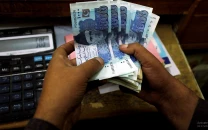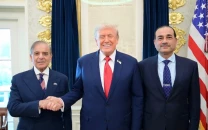No need for complacency

To substantiate his point, Ross highlighted that Pakistan turned to the IMF for an emergency loan package in November 2008, when inflation was 25 per cent, central bank reserves were the equivalent of just one month of imports and the current account deficit had widened to 8.5 per cent of gross domestic product.
Now, he said, inflation has dropped to 13 per cent, reserves cover four months of imports and the current account deficit is set to be around 2-3 per cent of GDP this fiscal year ending June 30. He has taken all the credit for the somewhat better economic condition compared to the one Pakistan was facing in the second half of 2008.
However, this seems to be a short-term boost as eventually all loans will have to be repaid and that too with interest. How the country will be able to pay that loan is a big question mark. Will this lead the country to seek another bailout package. A country developing on borrowed money is always vulnerable and may plunge into crisis anytime.
How the indicators improved
A deeper look at the three economic indicators, which according to Ross have improved after the IMF’s support, points to something different. In 2008, inflation surged in the face of skyrocketing prices of oil which the country imports in large quantities to fuel its economy. It eats up around $10-12 billion a year in import costs.
Besides oil, high prices of commodities, including wheat, also pushed up inflation as food has a major weight in the Consumer Price Index. Inflation came down because oil prices fell from their peak of $147 to around $70 this year. Commodity prices in the international market have also declined when compared to 2008 levels.
The current account balance improved this year as trade deficit sharply narrowed due to the low import bill. Imports dropped mainly in the wake of a fall in prices of crude oil in the global market and low commodity prices. Improved exports, particularly of cotton and yarn, also provided support.
Foreign exchange reserves improved not because of a sharp increase in exports and high foreign investment. The coffers swelled mainly because of the arrival of IMF loan which in effect is not Pakistan’s money.
Major problems
This brings to mind another question has the economy become strong enough to become self sufficient. One of the problems facing the country is low revenues which the government needs to increase to meet its runaway expenditures, of which debt servicing swallows a major share.
To improve its finances, the government will remove subsidies on electricity supplies, as suggested by the IMF, but it may encourage more power theft. It may also spark mass protests, a fear which might have prompted the government to defer a planned increase in power tariff by six per cent from April.
The IMF has also asked the government to improve revenues by bringing more sectors into the tax net as according to estimates only two million people pay tax in the country. However, it is a known fact that large amounts of taxes are evaded in connivance with the corrupt tax officials.
Though it could not be denied that the IMF rescue helped the country avert a default on debt payments, there is no need for complacency.
Published in the Express Tribune, May 31st, 2010.

1728020501-0/Express-Tribune-Web-(13)1728020501-0-208x130.webp)

















COMMENTS
Comments are moderated and generally will be posted if they are on-topic and not abusive.
For more information, please see our Comments FAQ